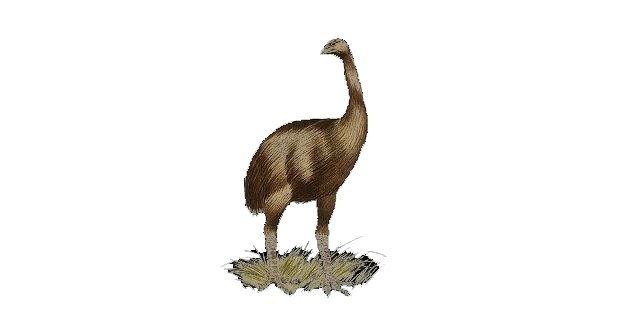Science
Colossal Bioscience Aims to Revive Moa with Genetic Technology

A Texas-based biotechnology company is actively pursuing a groundbreaking project to bring the extinct South Island giant moa back to life. Colossal Bioscience, in collaboration with researchers from the Ngai Tahu iwi, is employing advanced techniques in ancient DNA analysis and gene editing, similar to those used in their previous work with dire wolves and mammoths.
Ben Lamm, the Chief Executive Officer of Colossal Bioscience, shared insights into the ambitious project during an interview with Ryan Bridge. The initiative aims to harness cutting-edge genetic technologies to resurrect the moa, which thrived in New Zealand until its extinction over 500 years ago. Lamm expressed optimism about the potential to restore not just the giant bird but also the ecological balance in its native habitat.
Scientific Approach to Resurrection
Colossal Bioscience’s strategy revolves around the extraction and analysis of ancient DNA, which serves as a blueprint for the genetic characteristics of the moa. By utilizing gene-editing technologies, researchers plan to recreate the genetic code necessary for the bird’s revival. Lamm emphasized that the work is not merely theoretical; it builds on existing scientific advancements that have successfully brought back extinct species.
The collaboration with Ngai Tahu, a Māori iwi with ancestral ties to the South Island, adds a culturally significant dimension to the project. The iwi’s involvement ensures that the restoration of the moa is approached with respect for its cultural heritage and historical context. Ngai Tahu representatives have expressed their commitment to the project, highlighting the importance of the moa in Māori mythology and its role in the region’s biodiversity.
Implications for Conservation and Biodiversity
The revival of the moa could have far-reaching implications for conservation efforts in New Zealand. As an apex herbivore, the giant moa played a crucial role in shaping the landscape and maintaining the ecological balance. Its return could help restore the ecosystems that have been altered since the bird’s extinction.
Lamm’s team is not just focused on the technical aspects of the project; they are also considering the broader environmental impact. By reintroducing the moa, Colossal Bioscience aims to foster biodiversity and promote a healthier ecosystem. This initiative aligns with global efforts to address species extinction and environmental degradation, showcasing the potential of biotechnology in conservation.
As the project progresses, Colossal Bioscience plans to keep the public informed about its developments. Lamm encourages collaboration and dialogue with various stakeholders, including conservationists, scientists, and indigenous communities, to ensure a comprehensive approach to the revival of the moa.
The journey to resurrect the South Island giant moa is still in its early stages, but Colossal Bioscience’s innovative approach may pave the way for future advancements in de-extinction and conservation science. The project’s success could inspire similar efforts globally, potentially leading to the revival of other extinct species and a renewed focus on preserving our planet’s biodiversity.
-

 World6 days ago
World6 days agoPrivate Funeral Held for Dean Field and His Three Children
-

 Top Stories1 week ago
Top Stories1 week agoFuneral Planned for Field Siblings After Tragic House Fire
-

 Sports3 months ago
Sports3 months agoNetball New Zealand Stands Down Dame Noeline Taurua for Series
-

 Entertainment3 months ago
Entertainment3 months agoTributes Pour In for Lachlan Rofe, Reality Star, Dead at 47
-

 Entertainment2 months ago
Entertainment2 months agoNew ‘Maverick’ Chaser Joins Beat the Chasers Season Finale
-

 Sports3 months ago
Sports3 months agoSilver Ferns Legend Laura Langman Criticizes Team’s Attitude
-

 Sports4 weeks ago
Sports4 weeks agoEli Katoa Rushed to Hospital After Sideline Incident During Match
-

 Politics2 months ago
Politics2 months agoNetball NZ Calls for Respect Amid Dame Taurua’s Standoff
-

 World2 weeks ago
World2 weeks agoInvestigation Underway in Tragic Sanson House Fire Involving Family
-

 Entertainment3 months ago
Entertainment3 months agoKhloe Kardashian Embraces Innovative Stem Cell Therapy in Mexico
-

 Sports4 weeks ago
Sports4 weeks agoJamie Melham Triumphs Over Husband Ben in Melbourne Cup Victory
-

 World4 months ago
World4 months agoPolice Arrest Multiple Individuals During Funeral for Zain Taikato-Fox



















